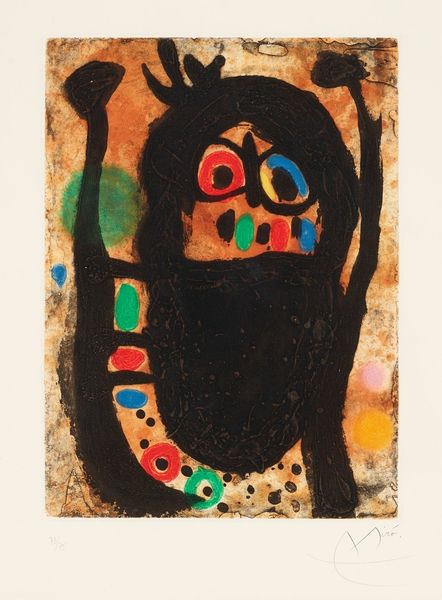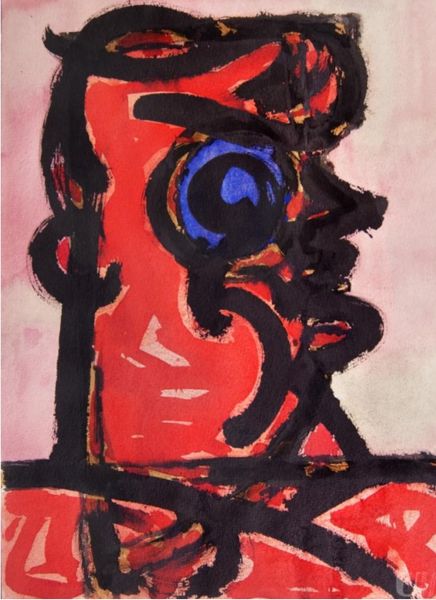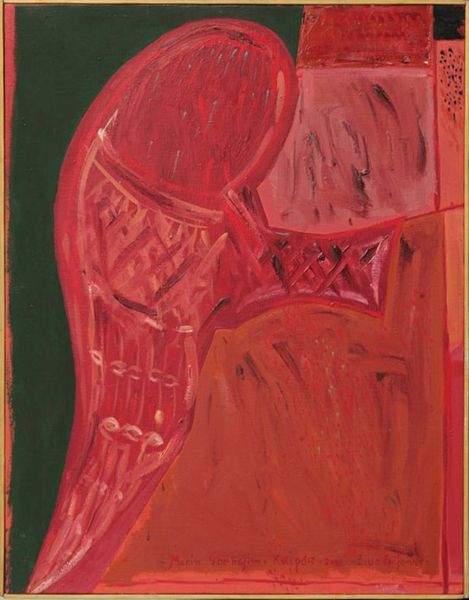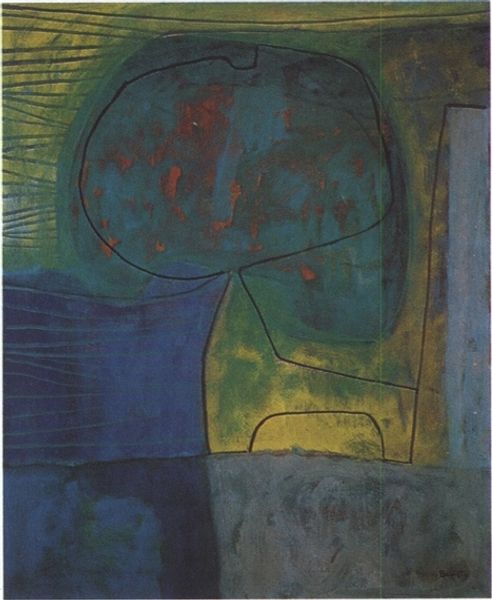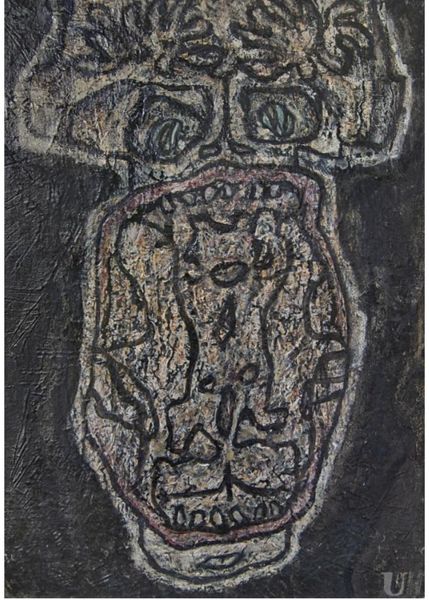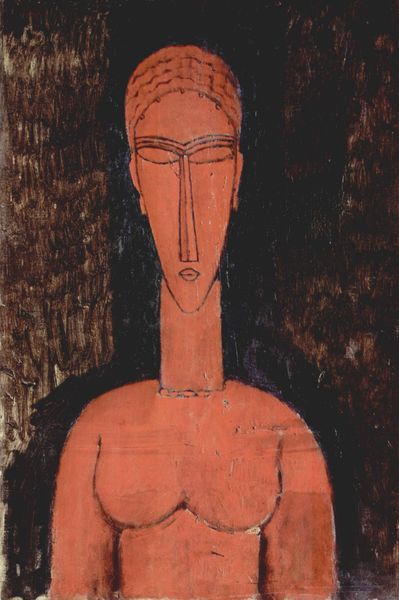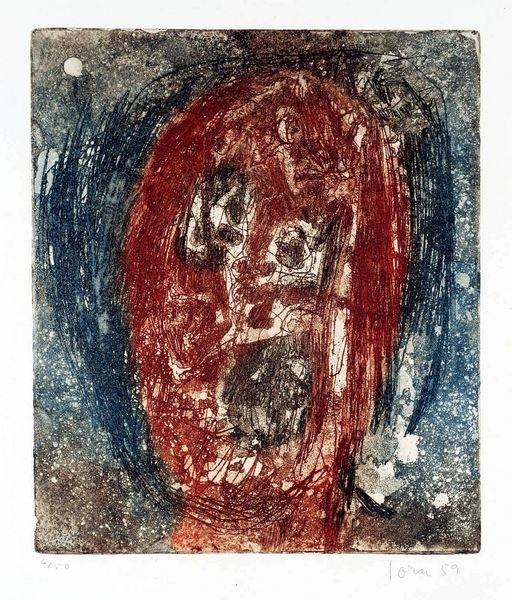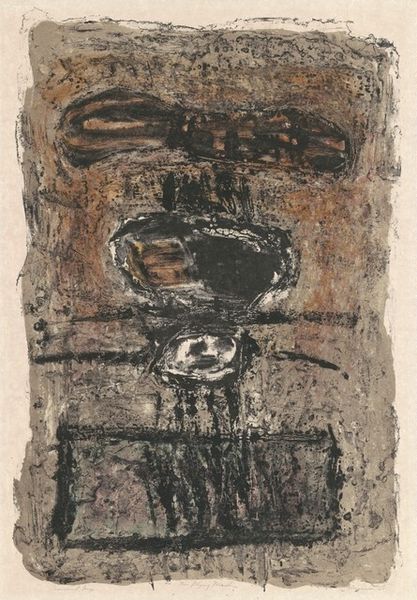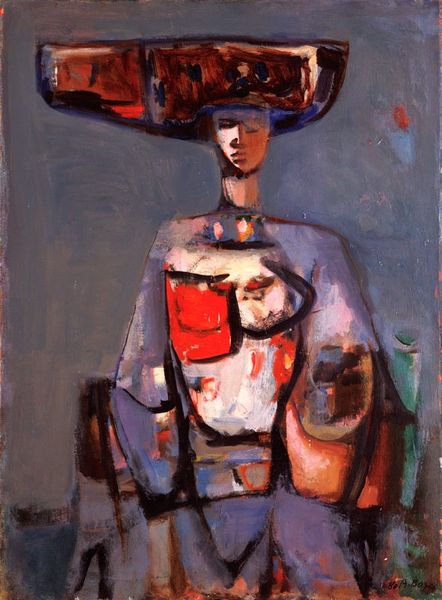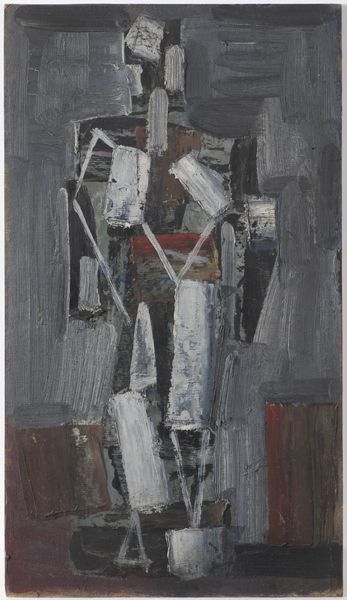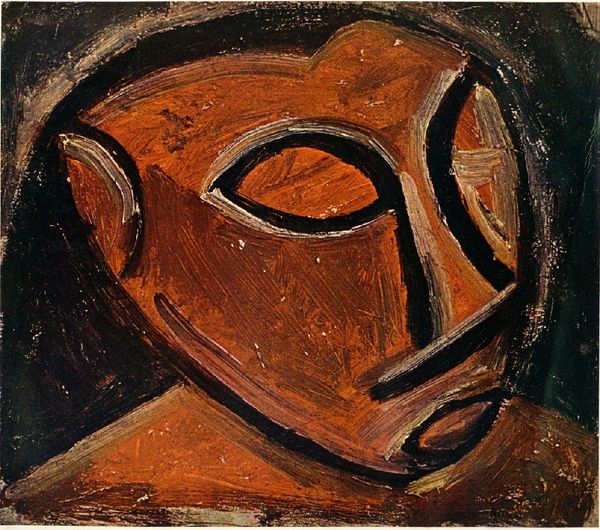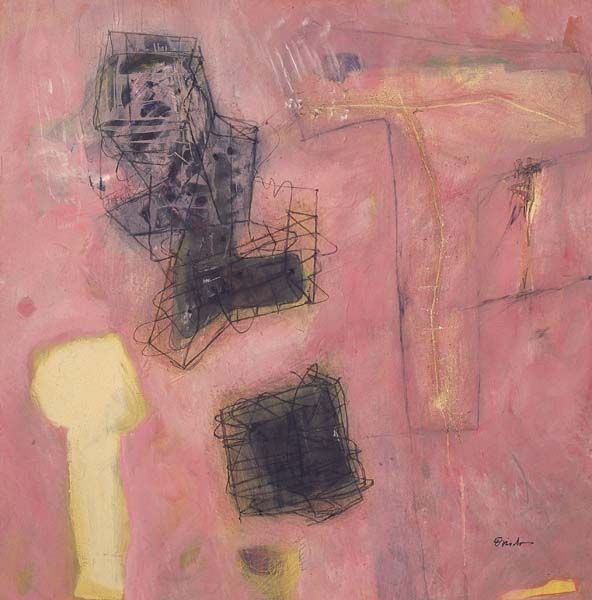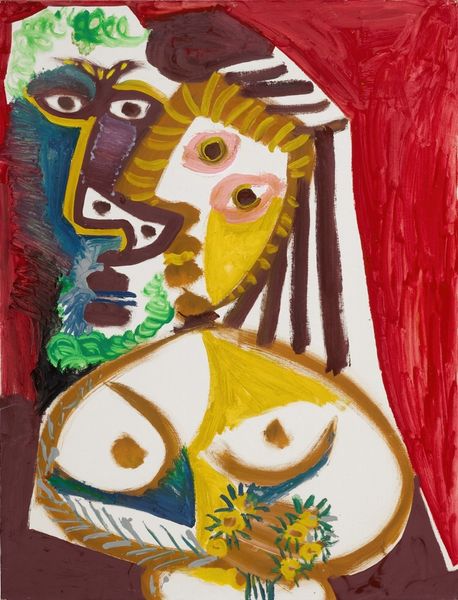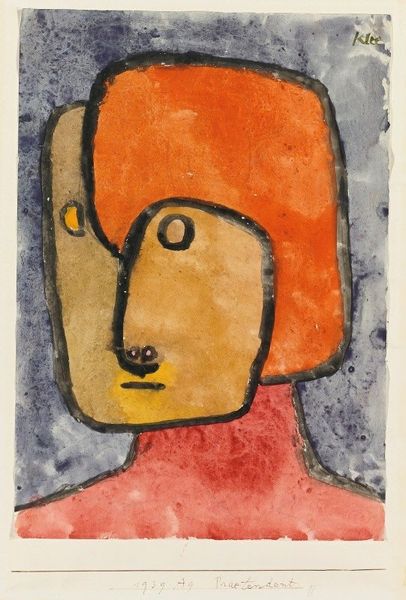
Copyright: Vilen Barsky,Fair Use
Editor: Here we have Vilen Barsky's "Cadet" from 1964, an oil painting. The colors feel very earthy, but the figure also appears confined and uncertain somehow. How do you read the composition? Curator: Immediately, I observe the artist’s deliberate use of impasto. Notice how the thick application of paint, particularly in the face, creates a tactile surface. The stark, almost brutal, juxtaposition of earthy browns with the sharp black outlines forces us to confront the materiality of the paint itself. Does the geometry in the facial features draw your eye? Editor: It does. They seem almost like primitive shapes, especially the eyes and mouth. Curator: Precisely. Barsky employs a calculated flattening of form, eschewing traditional modeling for a direct, almost childlike, rendering. This simplification, paired with the textured surface, elevates the painting to an object rather than merely a representation. What does that objecthood suggest to you? Editor: Perhaps it's the lack of traditional form that makes it feel modern? It's a person, but stripped down to just… shapes and textures. It becomes abstract. Curator: An excellent observation. The tension between representation and abstraction is key here. By denying the viewer easy access to a conventional portrait, Barsky forces an engagement with the pure visual language of painting. It's an exploration of form that transcends mere likeness. Editor: So, it's about seeing what painting *is* as much as seeing *who* it represents. Curator: Precisely. And by examining these compositional elements, the material properties, we engage in art beyond mere subject. Editor: I'm seeing this painting in a new light; considering it through the forms instead of the figure gives me a different entry point. Curator: Exactly! Focusing on pure visual structure, as in formalism, enriches understanding of artistic value.
Comments
No comments
Be the first to comment and join the conversation on the ultimate creative platform.
